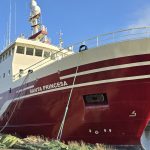Commercial fishers will need to brush up on their rules from 1 July 2009 with a number of regulation changes coming into effect along Queensland´s east coast that will affect the shark and ray fishery in particular.
Queensland Primary Industries and Fisheries Resource Manager Mark Lightowler said the new rules were to ensure that our state´s fisheries remained sustainable.
“Over the past two years there has been extensive consultation on the East Coast Inshore Fin Fish Fishery, with final measures receiving close public and scientific scrutiny before being approved by the state government,” Mr Lightowler said.
“The 1 July changes are mainly for the commercial fishers, and follow on from the new rules for both commercial and recreational fishers announced in March.
“We have been communicating with commercial fishers since January about these new measures so that they are able to adopt the new rules into their fishing operations.
“The changes include new measures to protect sharks and rays. This fulfils a key commitment of the Queensland Government as part of the accreditation of our Inshore Fin Fish Fishery under the Commonwealth Environment Protection and Biodiversity Conservation Act 1999.
“Many shark fisheries worldwide have been fished beyond sustainable limits, but in Queensland we recognise the important role sharks play in the marine ecosystem.
“We are taking a precautionary approach to the management of sharks and rays until further information can be gathered over the next three years on which to base future management decisions.”
The new fishing rules for sharks and rays include:
new licensing arrangements in the shark fishery, to reduce the number of commercial fishers that can take shark
a reduction in total commercial shark catch from 950 tonne to 600 tonne per year
a requirement that all fins and tails be naturally attached to the body for guitarfish, grey reef shark, white tip reef shark and shovelnose rays
closures to net fishing in the Kennedy, Bizant and Normanby Rivers flowing into Princess Charlotte Bay.
There will also be changes to nets, including net length, mesh size and how and when they´re used by commercial fishers along Queensland´s east coast.
“Commercial fishers who set their nets in offshore waters will now need to attend their nets at all times – this is important for the safety of both people and animals,” Mr Lightowler said.
“Fishers need to be alert for species not meant to be caught in nets, such as sawfish, dugong and turtles, so they can be freed quickly.
“This will bring our offshore netting rules in line with other nets used in inshore waters, creeks and rivers.
“Grey mackerel are a key species in the east coast fishery, and have been reviewed for sustainability.
“To ensure further pressure is not placed on grey mackerel a commercial catch limit of 250 tonnes is being introduced.”
Mr Lightowler said over the past 30 years, Queensland’s population had doubled to 4.3 million, putting pressure on our fishing resources particularly along the coast.
“These new fishing rules aim to ensure the sustainability of our fish stocks so that commercial fishing remains viable and recreational anglers can continue to enjoy Queensland fishing,” he said.
“I would like to thank all those who participated in the review process. The feedback received was invaluable in reaching the final management arrangements.”








